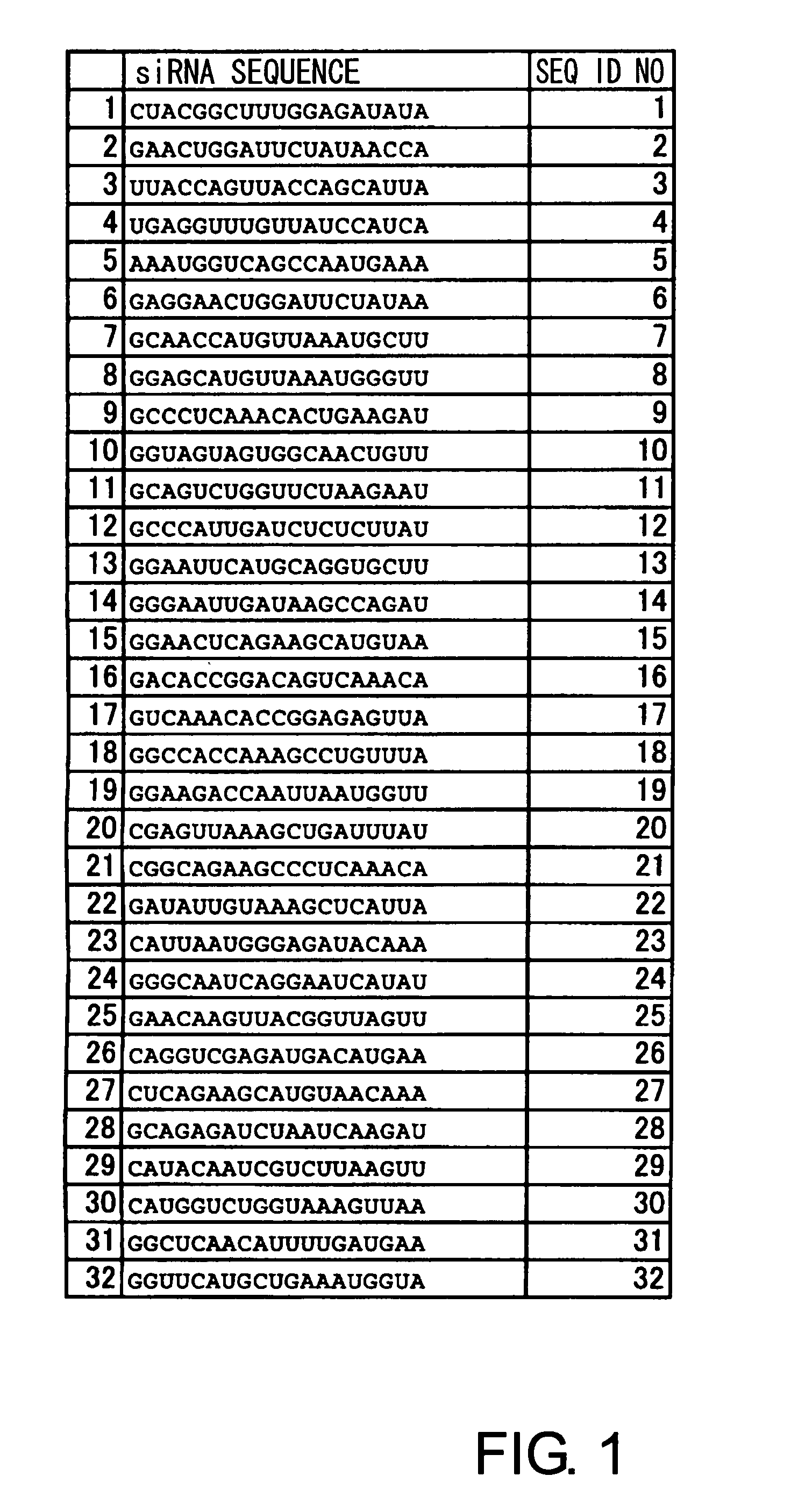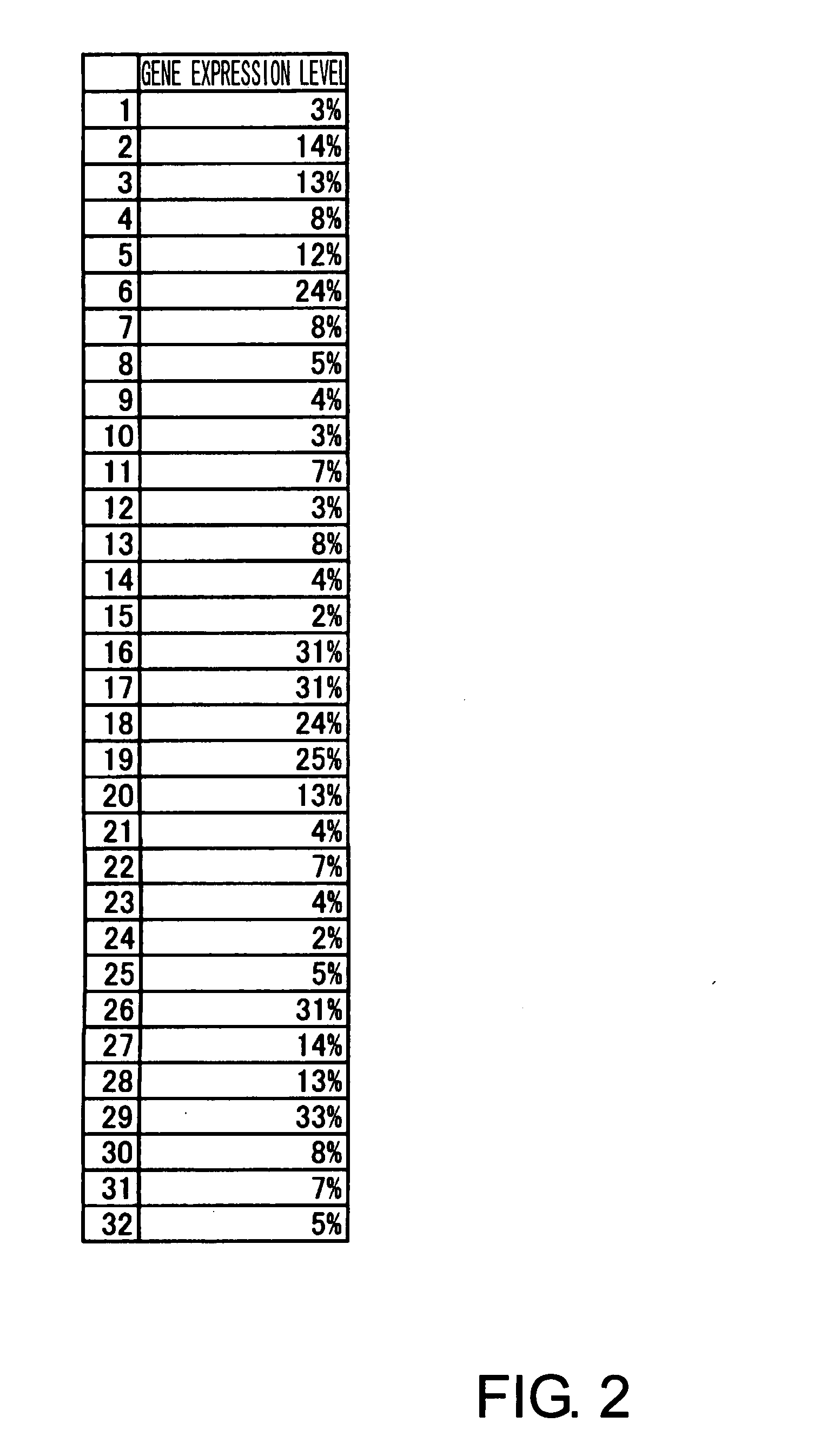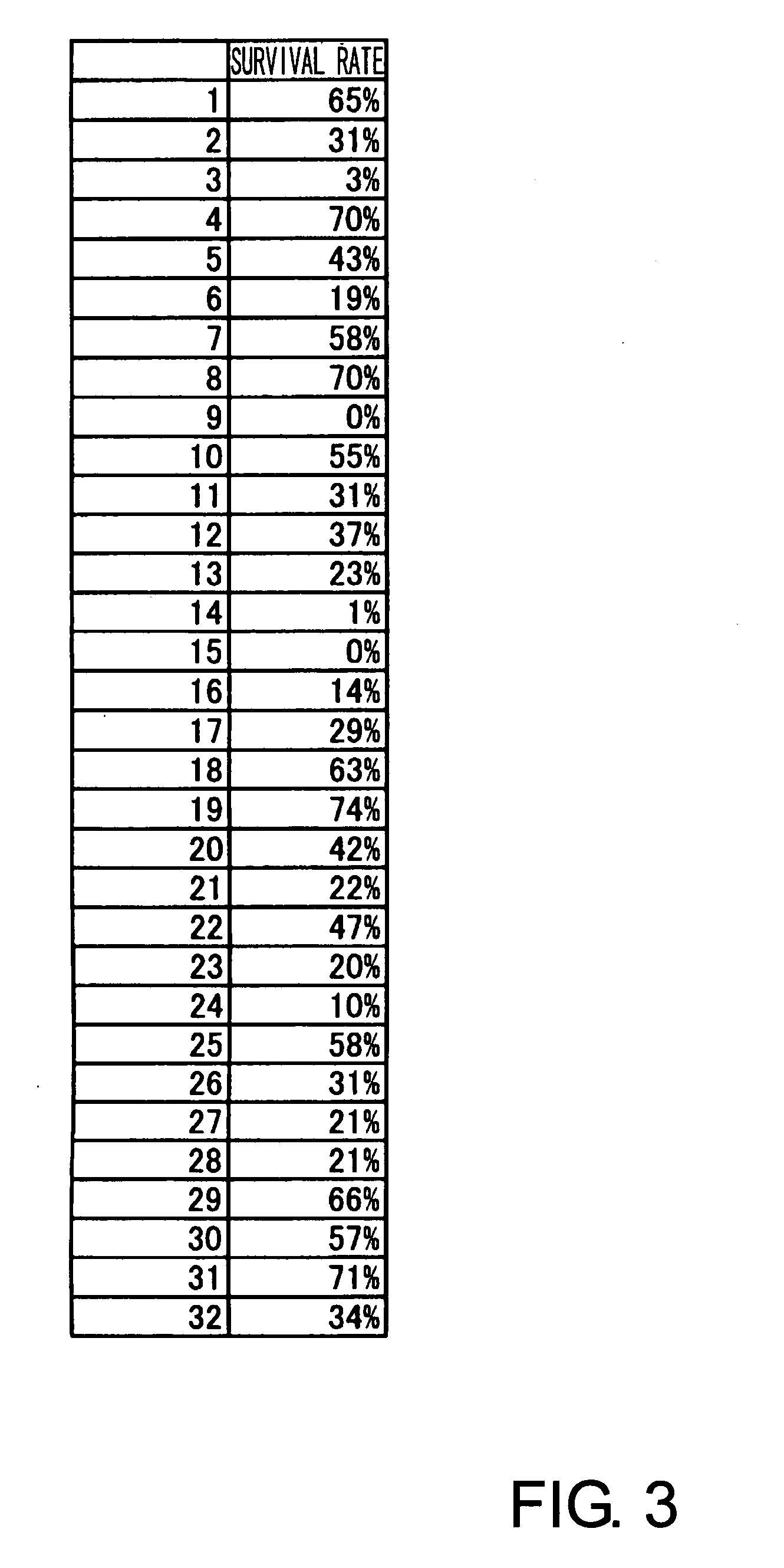Cancer-Cell-Specific Cell Proliferation Inhibitors
a cell proliferation inhibitor and cancer-cell technology, applied in the field of compounds, can solve the problem that compounds cannot be expected to be useful anticancer agents, and achieve the effect of suppressing recq1 gene expression
- Summary
- Abstract
- Description
- Claims
- Application Information
AI Technical Summary
Benefits of technology
Problems solved by technology
Method used
Image
Examples
example 1
Cell Cultures
[0061]HeLa cells (human cervical cancer cells) were used as human cancer cells, and TIG3 cells (normal diploid fibroblast cells) were used as normal human cells. HeLa cells and TIG3 cells were cultured at 37° C. under 5% CO2 using Dulbecco's modified Eagle's medium containing 10% fetal bovine serum and 50 μg / mL gentamicin.
example 2
siRNA Design
[0062]Thirty-two siRNAs against RecQ1 gene were designed according to the method of Elbasher et al. (Elbasher, M. S. et al. Duplexes of 21-nucleotide RNAs mediate RNA interference in cultured mammalian cells. Nature 411, 494-498 (2001)) and the method of Reynolds et al. (Reynolds A. et al., Rational siRNA design for RNA-interference. Nat. Biotechnol. 3, 326-30 (2004)). FIG. 1 shows each of the siRNA sequences. The siRNAs were synthesized at Qiagen.
example 3
Cancer Cell-Specific Cell Proliferation-Suppressing Effects Due to the Suppression of RecQ1 Gene Expression
[0063](1) Suppression of RecQ1 Gene Expression by siRNAs
[0064]Cells were plated onto 24-well plates at a density of 0.8-1.5×104 cells / well 24 hours before transfection, and siRNAs were transfected under the condition of 20-50% confluency. 10 pmol of siRNA was transfected per well using Oligofectamine (Invitrogen) or Lipofectamine 2000 (Invitrogen) following the manufacturer's protocol. Expression of the RecQ1 gene mRNA 24 hours after introduction of siRNA was quantified using Taqman PCR. Specifically, total RNA was extracted from cells at 24 hours after siRNA transfection using an RNeasy Mini Kit (Qiagen). ABI PRISM 7000 Sequence Detection System (Applied Biosystems) was used for quantitative PCR. RT-PCR primers for the RecQ1 gene and β-actin gene, and TaqMan probes were purchased from Applied Biosystems. RT-PCR reactions were performed using a QuantiTect Probe RT-PCR Kit (Qiag...
PUM
| Property | Measurement | Unit |
|---|---|---|
| Fraction | aaaaa | aaaaa |
| Fraction | aaaaa | aaaaa |
| Fraction | aaaaa | aaaaa |
Abstract
Description
Claims
Application Information
 Login to View More
Login to View More - R&D
- Intellectual Property
- Life Sciences
- Materials
- Tech Scout
- Unparalleled Data Quality
- Higher Quality Content
- 60% Fewer Hallucinations
Browse by: Latest US Patents, China's latest patents, Technical Efficacy Thesaurus, Application Domain, Technology Topic, Popular Technical Reports.
© 2025 PatSnap. All rights reserved.Legal|Privacy policy|Modern Slavery Act Transparency Statement|Sitemap|About US| Contact US: help@patsnap.com



